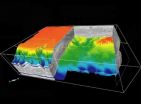"Unlike patients who receive traditional lung sacrificing surgery for mesothelioma, the patients in our study who underwent lung sparing surgery and photodynamic therapy, a light-based cancer treatment, have experienced unusually long overall survival rates. The median survival for those patients had not been reached at over two years when the results were analyzed. That's unusual in this field, especially when the majority of those patients are older and have advanced cancer," said Joseph Friedberg, MD, co-director of the Penn Mesothelioma and Pleural Program and the thoracic surgeon who performed the operations cited in the study. "In addition to the overall survival statistics, the difference between having and not having a lung, both with respect to the risk of surgery and the ability to enjoy a normal life after surgery, is crucial for these patients."
Mesothelioma is one of the most aggressive and deadliest forms of cancer and is usually caused by exposure to asbestos. Exposure to asbestos typically precedes development of the cancer by anywhere from 10 - 50 years, but once it occurs, the average survival rate following diagnosis is often only 9-12 months.
Although mesothelioma can occur in other locations like the abdomen, pleural mesothelioma is the most common form of the disease and accounts for roughly 70 percent of cases. This form originates in the pleura – the membrane surrounding the lung and lining the chest – where it starts off as a microscopic sheet of malignant cells that coats the interior of the chest and can grow to be several inches thick. The coating and enveloping nature of the cancer makes it impossible to completely remove it with surgery alone. As a result, the conventional surgery-based approach to treatment involves radical surgery that includes removing the lung, in combination with chemotherapy and whole chest radiation. Even with this aggressive treatment, the disease will recur in almost all patients.
The current study had two goals. The first was to determine if using a new combination of PDT and surgery would allow a less extensive surgical procedure to be used in lieu of an EPP. The second was to determine if, based on previous research from Penn with PDT, the treatment would have any positive effect on survival for patients.
Unlike radiation, which passes through the body, the PDT therapy used in the current study penetrates only a short distance which allows the lung to be preserved. The PDT treatment aims to eradicate the remaining microscopic disease trigger a patient's own immune system to help fight cancer. Penn is one of only two centers in the world where PDT is used to treat pleural mesothelioma.
In the study, 28 patients (19 men, 9 women) underwent surgical resection plus PDT for pleural mesothelioma. Patients were aged from 27 to 81 years. All patients were seen in a multidisciplinary setting and educated about the spectrum of treatment options available, including surgical intervention and its currently investigational status. Of the study group, 14 patients were treated by modified extrapleural pneumonectomy (MEPP) and 14 by radical pleurectomy (RP) and intraoperative PDT. Twenty-two of the 28 patients also received chemotherapy.
Demographics in the MEPP and RP cohorts were similar in age, sex, stage, nodal status, histology, and adjuvant treatments. Stage III/IV disease was present in 12 of 14 patients (86 percent) in both groups. The median overall survival for the patients who received the MEPP treatment was 8.4 months. At a follow-up 2.1 years after the end of treatment, a median survival rate for the patients who received a radical pleurectomy had not yet been reached. The results yielded by the radical pleurectomy and adjuvant PDT were superior to other studies of surgical treatment plans with patients of similar demographics.
"Our primary motivation in attempting the lung sparing surgery was preservation of quality of life, and we were hoping the survival results would at least be similar to the more traditional pneumonectomy approach," said Friedberg. "Although our pneumonectomy results were in line with what is often reported for similar patients having surgery-based treatments, we were completely caught off guard when the analysis revealed a significantly longer survival for the patients who retained both lungs."
Although all patients in the current study received the PDT therapy in combination with a different surgical technique, the researchers further note that the use of intraoperative PDT is the evident difference between the multimodal protocol used in the current study and other standard treatment options presently in use, and it seems worth speculating on any potential direct contributions of the PDT to the overall survival rates.
"Why this is happening is unclear and has emerged as the focus of our continuing research," said Friedberg. The possibility exists that the residual PDT-treated microscopic disease induced an autologous tumor vaccine effect or potentially enhanced the effect of adjuvant treatments.
"This study has limitations, as many mesothelioma studies do, but these results are very encouraging. The findings from our study are particularly notable because many of the patients in this study would often be excluded from surgery-based therapy because of their advanced age or unfavorable oncologic characteristics such as the large bulk of their cancers or the spread to the lymph nodes," said Dr. Friedberg. "Based on these results this lung-sparing technique, combined with photodynamic therapy, has become the backbone of our surgery-based treatment protocols."
A larger study investigating the efficacy of this multimodal approach is currently underway at Penn.
The Penn Mesothelioma and Pleural Program is a unique program that consists of a multidisciplinary team of dedicated specialists with a passion and expertise for treating patients with these difficult cancers. The Penn Program offers a true multidisciplinary approach, presenting patients with essentially all treatment options offered world wide and a number of treatments offered only at Penn.
###
Penn Medicine is one of the world's leading academic medical centers, dedicated to the related missions of medical education, biomedical research, and excellence in patient care. Penn Medicine consists of the Raymond and Ruth Perelman School of Medicine at the University of Pennsylvania (founded in 1765 as the nation's first medical school) and the University of Pennsylvania Health System, which together form a $4 billion enterprise.
Penn's Perelman School of Medicine is currently ranked #2 in U.S. News & World Report's survey of research-oriented medical schools and among the top 10 schools for primary care. The School is consistently among the nation's top recipients of funding from the National Institutes of Health, with $507.6 million awarded in the 2010 fiscal year.
The University of Pennsylvania Health System's patient care facilities include: The Hospital of the University of Pennsylvania -- recognized as one of the nation's top 10 hospitals by U.S. News & World Report; Penn Presbyterian Medical Center; and Pennsylvania Hospital – the nation's first hospital, founded in 1751. Penn Medicine also includes additional patient care facilities and services throughout the Philadelphia region.
Penn Medicine is committed to improving lives and health through a variety of community-based programs and activities. In fiscal year 2010, Penn Medicine provided $788 million to benefit our community.
END

